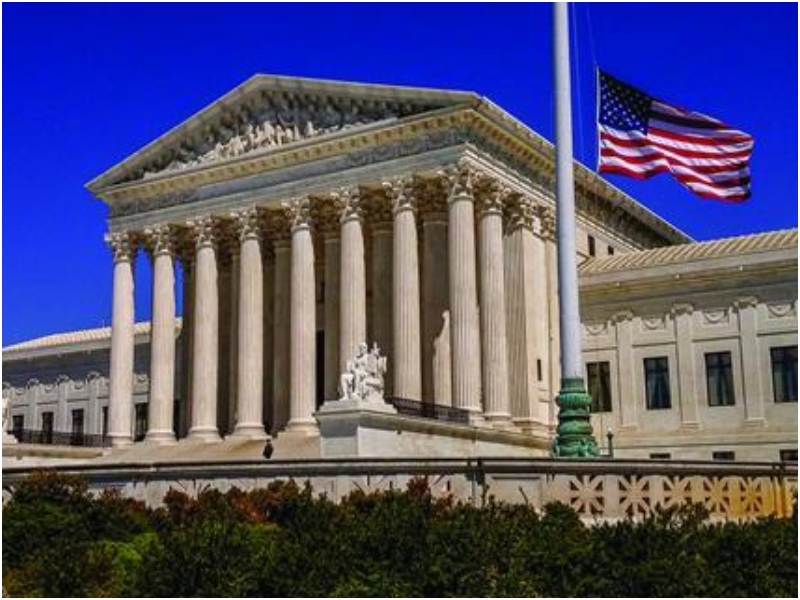President-elect Donald Trump, who reshaped the U.S. Supreme Court during his first term, may have the opportunity to solidify its 6-3 conservative majority by replacing some or all of its three most senior conservative justices. He could even expand the conservative dominance to 7-2 if a liberal justice steps down during his presidency.
Justices Clarence Thomas, 76, Samuel Alito, 74, and Chief Justice John Roberts, 70, all appointed by Republican presidents, are all eligible for retirement. Legal experts suggest that they may choose to retire now, with Trump succeeding Democratic President Joe Biden and Republicans taking control of the Senate.
Cornell Law School professor Gautam Hans said, “I think it likely that one or both of Justices Thomas and Alito step down in the next presidential term, and perhaps the chief justice, too.” He also noted that many federal judges confirmed under Trump could make the shortlist to replace them.
If one of the three liberal justices leaves, Trump could push the conservative majority to a 7-2 split. The oldest of the liberals, Sonia Sotomayor, is 70 and has type 1 diabetes, heightening speculation about her potential retirement.
The Nomination Process
Under the U.S. Constitution, the president nominates federal judges, who must then be confirmed by the Senate. With Senate rules requiring only a simple majority for confirmation, Trump and Senate Republicans will likely have the power to confirm new justices.
Trump defeated Democratic U.S. Vice President Kamala Harris in the 2024 election, and Republicans reclaimed control of the Senate. When Trump first took office in 2017, the Supreme Court had a 4-4 ideological split following the death of conservative Justice Antonin Scalia. During his first term, Trump appointed three conservative justices—Neil Gorsuch in 2017, Brett Kavanaugh in 2018, and Amy Coney Barrett in 2020—creating the current 6-3 conservative majority.
Since Barrett replaced the late liberal Justice Ruth Bader Ginsburg, the Court has moved American law to the right. Major rulings have rolled back abortion rights, expanded gun rights, rejected race-conscious college admissions policies, and limited the power of federal regulatory agencies.
A Shifting Court
During his presidency, Biden appointed only one justice—Ketanji Brown Jackson in 2022—but her addition didn’t alter the court’s ideological balance because she replaced liberal Justice Stephen Breyer. With the current makeup, the three liberal justices often find themselves in dissenting positions in major cases. To secure a majority, liberals need to persuade at least two conservatives to join them.
University of Illinois Chicago law professor Steve Schwinn said the retirement decisions of Justices Thomas, Alito, and Roberts likely depend on whether they feel their judicial legacies are complete. “Thomas has already solidified his legacy, and I imagine he’d be happy with a replacement continuing it,” Schwinn noted. “I’m less sure about Alito, and less sure still about Roberts. They may feel like they still have work to do, and that Trump’s presidency will embolden them to do it.”
Harvard Law professor Mark Tushnet said any retirement among these justices would likely lead to the appointment of younger, conservative jurists who embrace originalism—the judicial philosophy that interprets the Constitution and statutes based on their original meaning. “In the short run, that’s likely to have relatively little effect, with one conservative originalist replacing another,” Tushnet said. “But, of course, the new appointee or appointees will be there for a long time, consolidating a conservative majority that will be in place when or if a Democrat becomes president.”
Trump’s Judicial Legacy
At the time of their confirmations, Gorsuch was 49, Kavanaugh was 53, and Barrett was 48, suggesting they could serve for decades. Trump’s influence over the judiciary extends beyond the Supreme Court. During his first term, he confirmed 234 judicial nominees—the second-highest total for any president in a single term.
With Republicans regaining control of the Senate, Senator Chuck Grassley, poised to return as chair of the Senate Judiciary Committee, will likely lead efforts to confirm Trump’s judicial appointments. Grassley’s office confirmed that he “looks forward to working with President Trump to confirm highly qualified, constitutionally sound judges to the federal judiciary.”
Sotomayor’s Position
Some progressives have urged Justice Sonia Sotomayor to retire since 2022, hoping for a quick replacement before the Democrats lose control of the Senate. However, Sotomayor has shown no indication that she plans to step down. Tushnet dismissed the notion that she would retire before January 20, stating, “There’s no realistic possibility that Justice Sotomayor will retire immediately and have a replacement confirmed before Jan. 20.”
Some progressive groups had also called for Justice Ruth Bader Ginsburg to retire during President Barack Obama’s term to prevent a Republican president from replacing her with a conservative, but Ginsburg’s death in 2020 led to a conservative appointment in her place.
Hans echoed similar thoughts about Sotomayor: “I think there will be calls for Justice Sotomayor to step down to allow for a quick confirmation of a successor while President Biden is still in office, but I would be surprised if those succeeded.” He added, “The Democrats have not had great success in facilitating strategic retirements of justices they confirmed, with Justice Ginsburg as the most prominent example.”
The Path Ahead
As Trump prepares for his second term, the opportunity to reshape the judiciary remains a defining issue. He is likely to push for appointments that further consolidate the conservative influence on the Supreme Court, which could set the stage for decades of conservative rulings.

